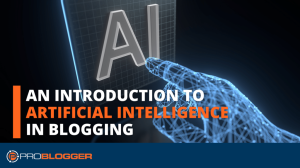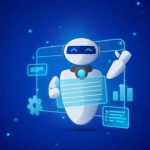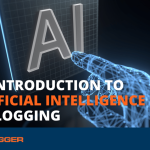AI Made Simple: Clustering and Anomaly Detection
March 26, 2025 | Chainadmin
How they Bring Order and Insight to the Real World
If you’ve ever wondered how artificial intelligence (AI) can make sense of the chaos around us—whether it’s organizing your customers into groups or spotting a suspicious transaction on your credit card—you’re in the right place.
Today, we’re diving into two super useful unsupervised learning tools in AI: clustering and anomaly detection. Don’t worry if those terms sound like tech jargon—we’re going to break them down into plain English and show you how they’re already working behind the scenes in your life and in businesses everywhere
Here at ChAIn Applied we’re all about bridging the gap between the techy side of AI (and blockchain, too!) and everyday folks like you and businesses. So, let’s explore how these algorithms work, why they matter, and how they can help real people and real businesses—without needing a PhD to understand them.

What Are Clustering and Anomaly Detection?
Imagine you’re at a busy farmer’s market. There are dozens of stalls selling fruits, veggies, handmade crafts, and baked goods. Now picture two superpowers you could have:
- Clustering: The ability to magically group similar stalls together—like putting all the fruit vendors in one corner, the craft makers in another, and the bakers in a third. You don’t tell the market how to group them; you just let the patterns emerge naturally.
- Anomaly Detection: The ability to spot something odd—like a stall selling snow shovels in the middle of summer. It doesn’t fit the usual vibe, and your spidey senses tingle.
In AI, clustering and anomaly detection are like those superpowers. They’re part of something called unsupervised learning, which means the AI doesn’t need a teacher telling it what’s right or wrong—it figures things out on its own by looking for patterns or weird outliers in the data.
Clustering: Organizing the Messy World
Let’s start with clustering. At its heart, clustering is about grouping similar things together when you don’t know the groups ahead of time. The most popular method for this is called k-means clustering. Here’s how it works in simple terms:
- Pick a Number (K): You decide how many groups (or “clusters”) you want. Let’s say you pick 3.
- Start Guessing: The AI randomly picks 3 “center points” (called centroids) in your data—like pinning 3 flags on a map.
- Group Up: Every data point (say, a customer or a product) gets assigned to the closest centroid, forming clusters.
- Adjust and Repeat: The AI moves the centroids to the middle of each cluster and reassigns points. It keeps tweaking until everything settles into neat groups.
Think of it like organizing a messy closet. You might start with random piles for shirts, pants, and socks, then keep adjusting until everything’s in the right spot.
Loved the farmer’s market example? I break down AI concepts like this every week—sign up for my newsletter to get simple, real-world tech insights delivered to your inbox!”
Real-World Example: Businesses Love Clustering
Imagine you run a small online store selling clothes. You’ve got hundreds of customers, but you don’t know much about them. Clustering can analyze their shopping habits—how much they spend, what they buy, how often—and group them into, say, three types:
- Bargain Hunters: They buy cheap items during sales.
- Trendsetters: They grab the latest styles, no matter the price.
- Occasional Shoppers: They pop in once a year for a gift.

Now you can tailor your marketing. Send Bargain Hunters discount codes, tempt Trendsetters with new arrivals, and remind Occasional Shoppers you exist. Without clustering, you’d be guessing—or worse, sending everyone the same boring email.
Big companies like Amazon and Netflix use this too. Ever notice how Netflix suggests movies that fit your taste? That’s clustering at work, grouping you with other viewers who like the same stuff.
Want to group your customers like this but not sure where to start? I help businesses like yours use AI to understand your audience and boost sales—no tech degree required. Let’s chat about how clustering can work for you!”
Anomaly Detection: Spotting the Odd One Out
Now, let’s switch gears to anomaly detection. This is all about finding things that don’t fit – Like a fraudulent transaction on your credit card for example. In Anomaly detection, it’s about teaching a system to recognize what’s “normal” and flag anything that’s not.
Here’s the basic idea:
- The AI model studies a bunch of data to learn the usual patterns—like how much you typically spend on groceries each week.
- When something weird pops up—like a $500 grocery bill when you usually spend $50—it raises a red flag.

Real-World Example: Keeping You Safe
Anomaly detection is a superhero in the world of cybersecurity and fraud prevention. Picture this: You’re sipping coffee in New York, and suddenly your bank texts you about a $1,000 purchase in Paris. Your credit card company’s AI noticed the anomaly—your card’s never been used overseas before—and froze the transaction. That’s anomaly detection saving the day.
For businesses, it’s just as handy. Say you own a bakery, and your ovens usually use a steady amount of electricity. If one starts spiking way higher than normal, anomaly detection could catch it early—before it breaks down or jacks up your bill.
How Do These Actually Get Built?
You might be wondering, “Okay, but how does the AI do this?” Let’s peek under the hood—just enough to impress your friends, not enough to need a math degree.
For k-means clustering:
- Initialization: The AI picks starting points for those centroids. A good guess makes it faster, but it can still work with random ones.
- Finding Closest Points: It measures how “close” each data point is to a centroid (think distance on a map) and assigns it to the nearest one.
- Updating Centroids: It recalculates the center of each cluster—like finding the middle of a crowd—and keeps going until the groups stop changing.
- Choosing the Number of Clusters: This is the trickiest part. Too few clusters, and you mash unlike things together; too many, and you overcomplicate it. Businesses often test a few options to see what makes sense.
For anomaly detection:
- The AI builds a model of “normal” based on past data—like your usual spending habits.
- It sets a threshold for what’s “weird.” Too strict, and it flags everything; too loose, and it misses real problems.
- When new data comes in, it checks if it fits the norm or stands out.
Supervised Learning vs. Anomaly Detection: What’s the Difference?
Here’s a quick detour: Sometimes people ask, “Why not use supervised learning instead?”
In supervised learning, you train the AI with labeled examples—like showing it tons of fraudulent and non-fraudulent transactions so it learns the difference. It’s great when you have lots of examples to teach it.
But anomaly detection shines when you don’t have many examples of the weird stuff— like fraud or oven breakdowns— because they’re rare. Instead of needing a big pile of “bad” data, it just learns what’s normal and flags anything outside that. For a small business with limited data, that’s a game-changer.
Why This Matters to You and Your Business
So, what’s the takeaway? Clustering and anomaly detection aren’t just fancy AI tricks—they’re practical tools that solve real problems:
- For Individuals: They make your life easier and safer. Clustering powers personalized recommendations, while anomaly detection protects your bank account.
- For Businesses: They help you understand your customers, spot issues early, and save money. Whether you’re a one-person shop or a big corporation, these tools can scale to fit.
And here’s the cool part: You don’t need to code them yourself. Tools like Google Cloud, Microsoft Azure, or even free software like Python (with some help from a tutorial) let you tap into these powers.
AI: No Longer a Luxury, but a Survival Imperative
Let’s get real: AI isn’t some shiny toy for tech giants anymore—it’s a do-or-die necessity for survival in today’s world. If you’re not using it, you’re already behind, bleeding opportunities while smarter businesses armed with tools like clustering and anomaly detection outmaneuver you. Ignore AI, and you’re not just risking a competitive edge—you’re gambling with your entire future. Customers will flock to rivals who personalize better, fraud will hit you harder, and inefficiencies will quietly sink you. In 2025, it’s not about keeping up with the Joneses; it’s about not being the next cautionary tale of a business—or individual—left in the dust by those who dared to embrace the tech revolution.
Wrapping Up: AI is for Everyone & Every Business
AI can feel intimidating, but at its core, it’s about making sense of the world—just like you do every day. Clustering organizes the chaos into groups you can act on, while anomaly detection keeps an eye out for trouble.
Together, they’re like a trusty assistant for your personal life or business, quietly working to make things smoother and smarter.
Next time you get a spot-on Netflix recommendation or a fraud alert from your bank, give a little nod to these unsung heroes of AI. And if you’re curious to try them out—maybe to group your online customers or catch a glitch in your site traffic—start small. The tech is there, waiting to help you bridge the gap between data and decisions.
What do you think? Have you seen clustering or anomaly detection at work in your world?
Let me know—I’d love to hear your stories!
“Thanks for reading! Hundreds of people like you are already learning how AI and blockchain fit into their lives with my newsletter. Join them and get simple, actionable insights every week—plus, share your own stories with me!”









